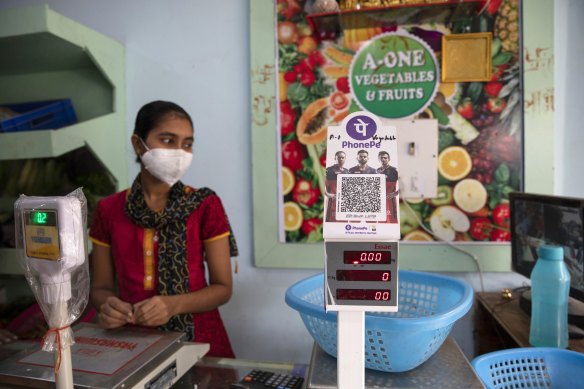According to Nalin Mehta, the author of the book India Thekkadywhich tracks the country's digital revolution, the changes facilitated “a new kind of welfare state based on direct digital benefit transfers and interconnected electronic governance systems.”
download
Mehta says the new digital public goods have had a profound impact on society, politics and culture. He says in his book: “Digital India is changing the infrastructure on which Indian society is based, transforming politics, the government’s relationship with every Indian, and the nature of the state itself.”
The innovations have “profound implications for the rest of the world and for the future of global technology itself,” Mehta says.
India is already a giant technological supplier to the world. Its exports of IT services and business process outsourcing reached US$194 billion ($295 billion) in 2022-23, according to Nasscom, the IT industry's peak body. A recent government study found that 5.2 percent of people ages 15 to 29 who live in urban areas can write a computer program using a specialized programming language.
Now India is encouraging other developing countries to follow suit in digital transformation and has offered to help them, through its subsidiary, NPCI International, digitize their infrastructure on a large scale. Neighbors Nepal and Bhutan have been using the payments system since 2022. According to Mehta, as many as 43 countries have shown interest so far.
download
India's digital transformation constitutes a new model for economic development, which is sometimes framed as an alternative to the approaches of Western countries and China, says Ritesh Shukla, CEO, NPCI International.
“Until now, there have been two models that people usually associate with them,” Shukla says.
“One is a very Western model of development, a very capitalist-driven, very urban-centric model where people are moved to cities, manufacturing units are set up and jobs are created. The other is a communist model. I think we have created a very unique model, very technologically based.” New.

A store displays a poster of the payment app in Bengaluru. The Modi government-backed payment infrastructure processed 11.4 billion transactions in October.credit: Bloomberg
Spreading this technological prowess could boost India's economy and influence, especially in developing countries.
When Prime Minister Narendra Modi met US President Joe Biden in Washington in June, their joint statement emphasized the need for “global digital inclusion” and stressed that the two countries would work together to provide global leadership in digital public infrastructure.
Digital has emerged as an “important sign” of India’s soft power, Mehta says The Economist India has even described its digital knowledge export plans as “India's low-cost, software-driven version of China's infrastructure-led Belt and Road Initiative.” (Chinese QR code-based apps facilitate micropayments on the mainland, and part of Beijing's aid funding for the Pacific Islands also includes digital technology, such as e-government infrastructure in Fiji.)
There are critics of India's approach. Some have questioned whether a government-controlled system will attract enough future investment and encourage cutting-edge innovation.
download
Concerns also remain about customer protection, privacy and data breaches.
However, a World Bank report released in September praised the approach, saying it allowed the country to achieve a level of financial inclusion within six years that “would have taken nearly five decades.”
Modi sees the system's rapid expansion as a national achievement that will attract global attention.
He used India's G20 presidency in 2023 to highlight the country's digital achievements.
download
“In India, digitalization has brought about revolutionary change,” Modi said at a meeting of G20 ministers in September. “Technology is being used as a tool to empower people, provide access to data, and ensure inclusivity. India is ready to share its experience with partner countries.”
Get a direct note from our foreigners Reporters About what's making headlines around the world. Subscribe to the weekly What in the World newsletter here.

